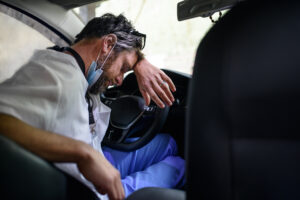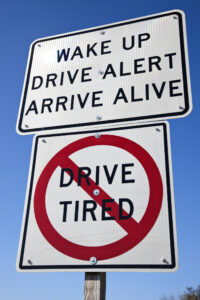How do you know when you’re too tired to drive?
Daylight Saving Time is a welcome sign Spring is almost upon us with longer days and more hours of sunlight to enjoy. It’s also time for the semi-annual discussion for many Canadian jurisdictions about the wisdom or lack thereof of continuing the practice to spring forward or fall back. Ontario and British Columbia have pledged to make this the last time change with New Brunswick and Quebec indicating they may also follow suit, but so far nothing is set in stone. It’s not a simple process with commitments to implementing this change hinging on the choices of neighbouring states or provinces.
Aside from the ongoing debate surrounding Daylight Saving Time, many of us are quite simply not looking forward to losing an hour of sleep again this year. It’s been a tough year for many of us and quite frankly, we’re all pretty exhausted. But it’s imperative to recognize the signs of fatigue and keep drowsy drivers off the road. Before we dive into this topic, let’s define it. Fatigued, tired, drowsy, sleepy, dopey…while they may mean different things to different people, from a road safety perspective it boils down to not being alert enough to fully engage in driving.
Fatigue warning signs
One of the most important facts about fatigue is that people are terrible at estimating when they will fall asleep. It’s like when you’re sitting on the couch, watching a movie, and suddenly you wake up and the credits are rolling. Even if you don’t feel tired, sleep is a biological need you just can’t fight.
Signs of fatigue include:
- frequent yawning
- sore, tired eyes or difficulty keeping your eyes open
- having trouble keeping your head up, nodding off
- boredom and/or loss of concentration
- irritability
- slow reactions
- hallucinations
What this means for your ability to drive is:
- failing to check mirrors
- lane drifting and/or missing exits or turns
- inconsistent speed, drifting out of your lane, and/or erratic braking
- inability to remember driving the last few kilometres
What you need to remember, is that all these behaviours increase crash risk.
In a 2011 survey of Canadian drivers, 18.5% of respondents reported they had fallen asleep or nodded off while driving in the past year. Perhaps not surprisingly, the majority of fatigue driving-related fatal crashes occur between 3:00am and 9:00am.
How drowsy driving compares to impaired driving
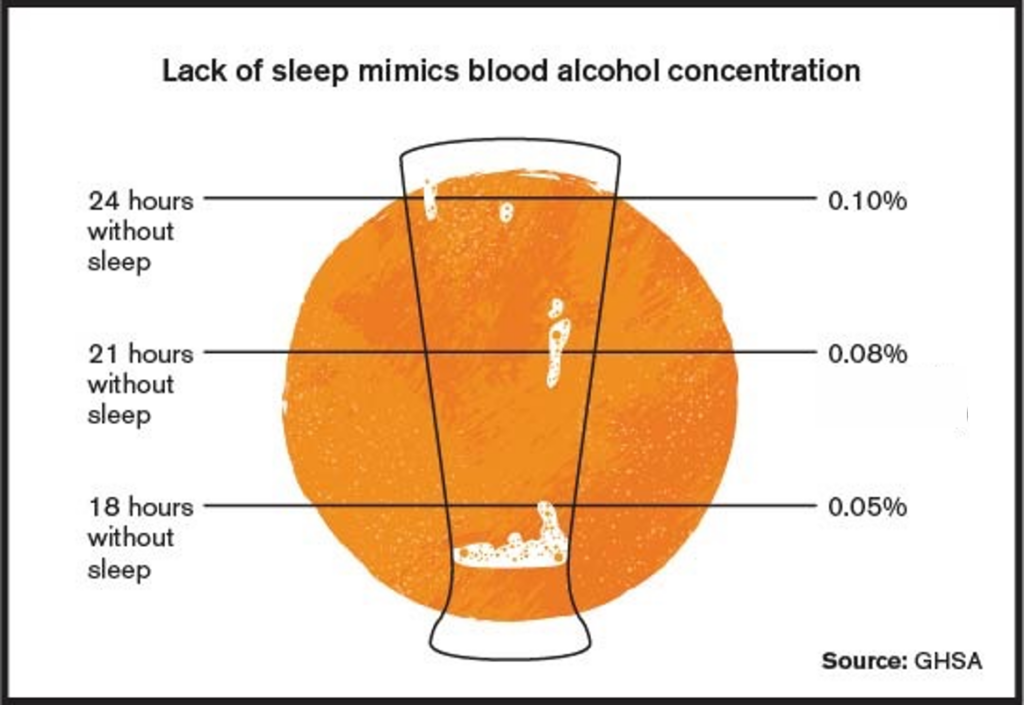
We all know the dangers of driving after drinking and most of us plan to have a designated driver or rideshare pick us up after a night out. So, why not do the same when you’re tired? Driving while fatigued not only puts the driver at risk, but also others. It’s our responsibility to protect others on the road.
Daylight Saving Time & tiredness
The impact of the hour lost from springing forward affects each of us differently. Some of us can adapt better to getting up an hour earlier because we’ve done so since November. For others, the effects of this shift can feel like a bad case of jet lag and it actually takes a day or two to adjust. Basically, our circadian rhythm, which is the body’s biological sleep-wake cycle, must shift to accommodate the new schedule throughout Spring and Summer. Most of us feel sleepy twice a day – in the afternoon and at night. Without the proper amount of sleep, tiredness occurs and once a person is tired there is no cure for tiredness other than sleep itself. So, if you had a sleep debt (meaning you didn’t have enough sleep to begin with) before the time change, you’re really going to feel it. The bottom line is the amount of sleep you get and how tired you are can really affect your driving skills, so it’s important to stay out of the driver’s seat when tired.
This month is also the one-year mark of the pandemic when everything changed for everyone, everywhere. Many have shifted to working from home while others have lost jobs, our healthcare system has been stretched to its limits and sadly, many have lost family and friends to COVID-19. I think we all agree, it’s been a difficult year that has taken a toll. This added stress can make it even harder to get enough rest.
How do you cure tiredness?
Many drivers use a variety of tactics to combat fatigue. These commonly used solutions have NO evidence of effectiveness:
- turning up the music/podcast
- opening windows
- talking to passengers
- eating
Even a caffeine infusion from coffee, tea or energy drinks or taking quick breaks have very limited and short-term effects on fatigue. The safest and most effective tactic is to plan ahead and get enough rest before driving. You can also ask a non-tired passenger to take over driving, or opt for public transportation, taxi, or ride-share service. If none of these options are available and you exhibit any of the signs of fatigue, take a break from driving, (safely) park your vehicle at a rest stop and take a nap. Even just 20 minutes can make a difference.
The line between work life and home life has blurred for many of us with increasing pressure to maintain productivity, perhaps find new ways to deliver services virtually, and not to mention keeping workplace morale intact. It’s a lot and there’s no shame in admitting when help is needed. As a society, toning down the demands of life and our approach to work/life balance is essential to both our mental and physical well-being. Also, given restricted travel options during the pandemic, it’s important to limit driving as much as possible particularly when travelling to other time zones, at least until you have had a chance to acclimate. If you think you might be too tired to drive, don’t.
Absolutely nothing is more important than your safety and that of others sharing the road.
#MySafeRoadHome blog co-authors: Karen Bowman, TIRF Director, Drop It And Drive® (DIAD) program and Hannah Barrett, TIRF Research Associate, work collaboratively as co-authors. Karen is also TIRF’s Director of Marketing & Communications; she uses her writing and blogging background to help apply TIRF’s research to real-world driving, cycling and walking. Hannah is a criminologist and specializes in alcohol ignition interlock programs, wildlife-vehicle collisions, and impaired driving countermeasures
Related topics:
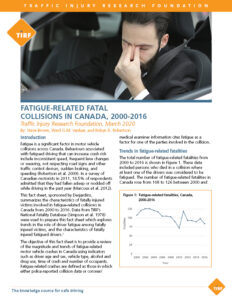 |
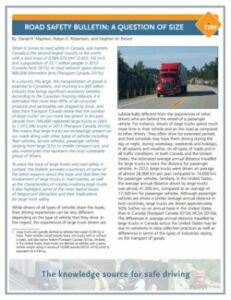 |
 |
Source documents and resources:
Daylight Saving Time returns — and so does the fight over changing clocks, Global News, March 8, 2021 – https://globalnews.ca/news/7674635/daylight-saving-time-2021-clock-change
Focus On The Road: SGI Highlighting Distracted and Drowsy Driving In March, Discover Humboldt, March 2, 2021 https://discoverhumboldt.com/local/focus-on-the-road-sgi-highlighting-distracted-and-drowsy-driving-in-march
Brown, S., Vanlaar, W. G. M., Robertson, R. D. (2020). Fatigue-related fatal collisions in Canada, 2000-2016. Ottawa, Ontario: Traffic Injury Research Foundation. https://tirf.ca/Fatigue_Related_Fatal_Collisions_Canada_2000_2016
Marcoux, K.D., Vanlaar, W.G.M., Robertson, R.D. (2012). The Road Safety Monitor 2011: Fatigued Driving Trends. Ottawa, Ontario: Traffic Injury Research Foundation.
Dawson D, Reid K. Fatigue, alcohol and performance impairment. Nature. 1997;388(6639):235.

